The Penn Doom, Buckinghamshire
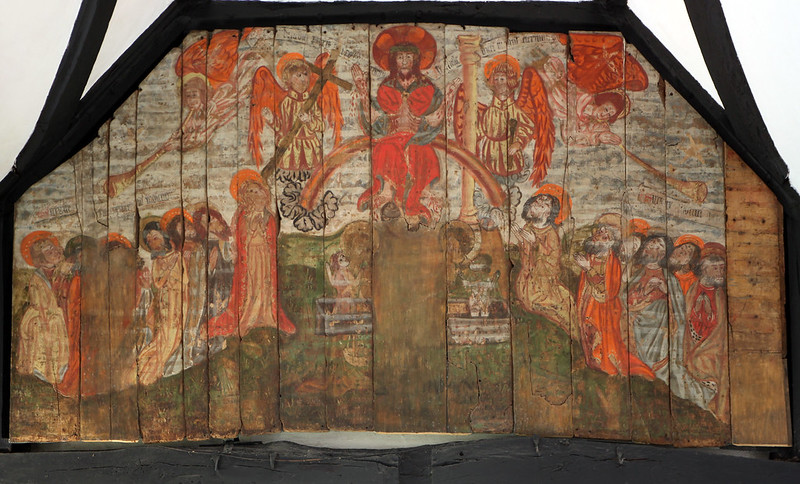
High up in the roof space, attached to the east wall
of the nave of Holy Trinity church in Penn in Buckinghamshire, is a very rare
object indeed. Painted on a series of wooden
boards, forming a Tympanum, is a vibrantly coloured Doom painting. It is one of only five Doom paintings on
boards that have survived from medieval England.
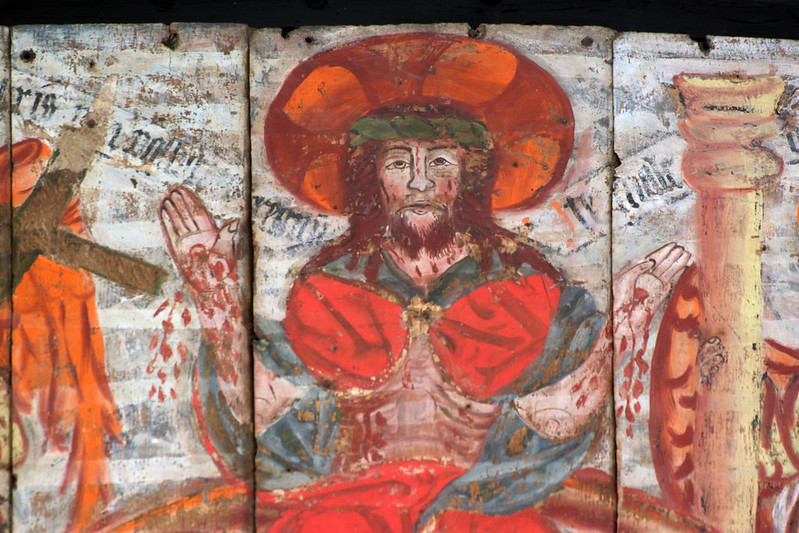

The Penn Doom was discovered in 1938, in a series of
events that closely mirror the discovery of the Wenhaston Doom in Suffolk in
1892, a subject of an earlier post on this blog. In the summer of 1938, extensive repairs were
being carried out at Penn church and during the course of the work some
decaying boards, whitewashed and covered in lath and plaster were found above
the chancel arch and were discarded in the churchyard. These boards were further broken up and Mr
Randall a local workman had already taken some to the tip. For some reason he decided to brush off some
of the whitewash and plaster on the boards and he instantly discovered
colour. He reported his discovery to the
vicar, who summoned the wallpaintings expert E. Clive Rouse. Rouse immediately came down to Penn, scoured
the tip for missing pieces and in the local school room he pieced together and
laid out the planks.
He came back at a later
date to remove the whitewash and plaster and the Doom emerged for the first
time in many generations.
Rouse discovered, as he stripped the boards of their
lath and plaster and whitewash, that the painted Doom composition he was
uncovering was in fact a palimpsest.
What initially appeared was a painting with two layers, a later
repainting obscuring an earlier painted scheme with the same iconography. The later scheme was executed in bright
colours with a crude use of line, while the elements of the earlier scheme that
appeared from beneath the later layer, appeared to more subtle in their
execution. Both phases of the work were of the same
subject matter, the Doom, the Last Judgement, but the second phase appeared to
have simplified the iconography of the first.
In carrying out his work, Rouse
attempted to uncover in some areas the details of the first phase that had been
obliterated by the second.
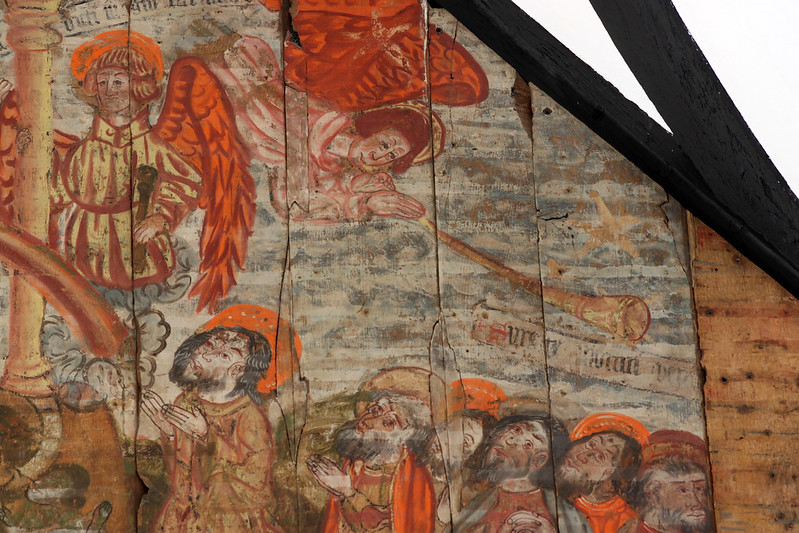

Iconographically, the composition of the Penn Doom
follows a typical pattern. Christ,
bearing the marks of his wounds, sits on a rainbow at the centre of the
composition, he is judging the world. On
either side of him are angels in albs and apparelled amices, carrying
instruments of the Passion. To either
side of them, are angels sounding the last trump on golden trumpets. Ranging on either side and kneeling on a
green mound below Christ, are figures of the saints interceding for the dead: to
the left the Virgin Mary, to the right St John the Baptist and behind them two
groups of the Apostles. The green mound
they are kneeling on, is a cemetery and at the sound of the trump, figures of
shrouded men and women rise from their tombs.
Unlike the Wenhaston Doom, there is no mouth of Hell and no gates of
Heaven in this composition and we can assume that the scene on the panel was
originally completed by other paintings, probably on the walls.
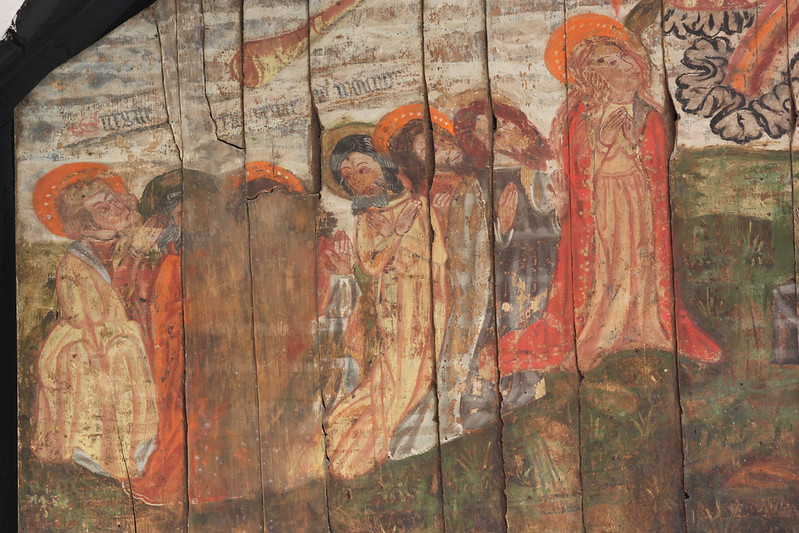

One of the elements that Rouse uncovered from the
earlier painted scheme are a series of scrolls with blackletter text on
them. On his right the text: VENITE
BENEDICTI PATRIS MEI POSSIDETE REGNUM (Come ye blessed of my father, inherit
your kingdom) and on his left: ITE MALEDICTI IN IGNEM ETERNUM (Go ye evil-doers
into eternal fire). Both of these imply
that there was originally a representation of heaven and hell as part of the
original iconographical scheme. Below
the angels with their trumpets, is a text directed at the dead: RESURGITE
MORTUI VENITE AD JUDICUUM (Rise ye dead and come to judgement). These texts were all painted out in the later
scheme.
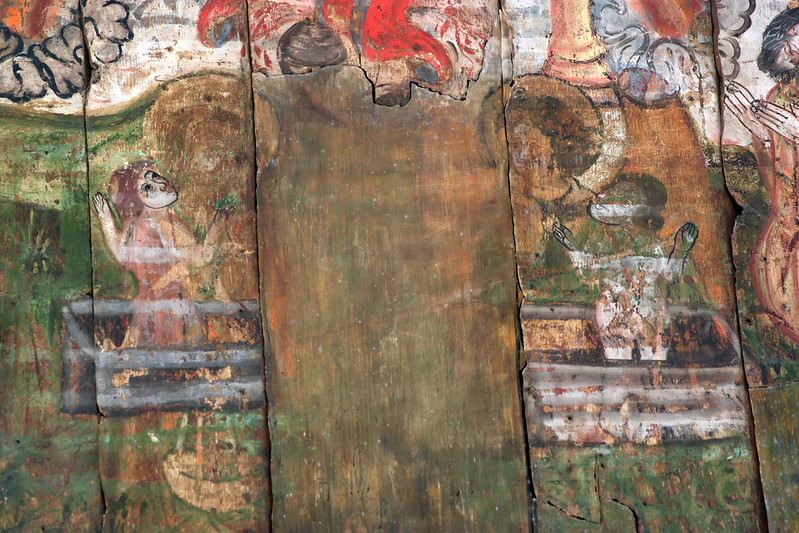

Another element painted out in the later scheme was a representation
of the Weighing of Souls and Rouse found the remnants of this appearing beneath
the green pigment of the mound below the rainbow (photo above). He carefully uncovered the outline of the head
of Mary and also of St Michael and one of the pans of the scales that Michael
was holding.


Rouse, with the assistance of Professor Francis
Wormald, a leading expert on medieval manuscripts, did try and have stab at the
dating of the different phases. Wormald
suggested on the basis of comparison with manuscripts that the earlier phase of
the world dated from around c.1400. Of
the later phase, Rouse came to the conclusion, primarily on the way the figure
of Christ is treated, that the work was after 1450 and perhaps late in the 15th
century. That makes a lot of sense, the
somewhat clunky feel to it feels late 15th or early 16th
century.
When the panel was conserved in 1999 the timbers of
the Tympanum were subjected to dendrochronology and this process indicated that
the timber of the panel was felled between 1414 and 1448, pushing the date of
the first phase of the painting forward some way. An analysis of the paint suggested that this
first phase was painted in an oil medium and in using a quite wide ranging and
subtle palette. The second phase was
also painted in oil, but in a more limited palette and with a predominance of
Vermillion.
Ruth Bubb who conducted the 1999 conservation scheme,
found evidence of a third decorative layer in addition to the two painted
layers. She saw outlines of stars scattered
over the whole surface of the painting, paying no respect to the composition
and iconography. She concludes that tin
stars, glazed with a yellow varnish, were affixed to these spaces. They were probably
pre-Reformation in date, as smoke particles from candles or incense were found
trapped inside the star shapes.
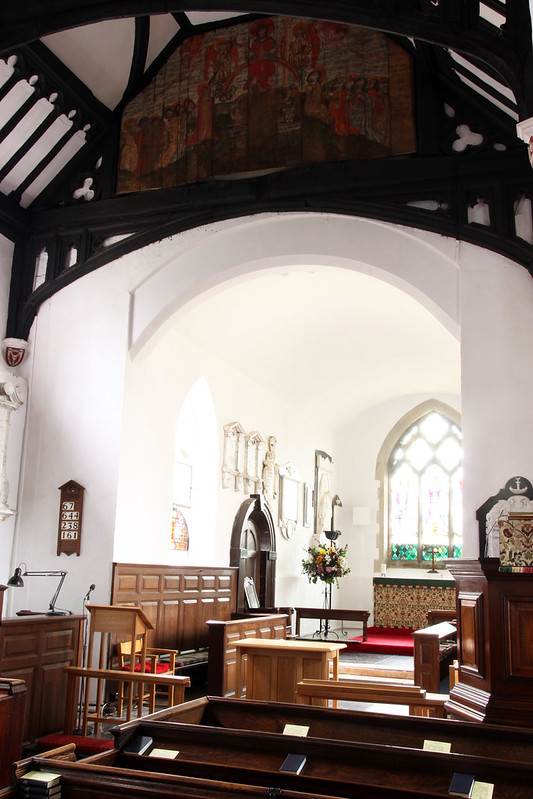

The present location of the Doom panel is unusual, it
is placed high up within the roof structure and is difficult to see, it is
difficult to see how in that position it could have been in relationship with
the great rood. In its current location
it isn’t in contact with any of the nave walls and it is difficult to see how
the iconography and composition could have been completed, unless it was close
to the nave walls. The original chancel
arch was removed in the eighteenth century and it seems likely that the
Tympanum, which once fitted into that lost chancel arch, was moved upwards at
that time to be used as a filling for the east wall of the chancel.
Bibliography
R. Bubb, ‘The Penn Doom: The re-examination and
conservation of an important medieval painting on wood’ in The Conservator 27: 1 (2003), pp.64-80.
E. Clive Rouse, ‘The Penn Doom’ in Records of Bucks 17, part 2 (1962), pp.
95-104.
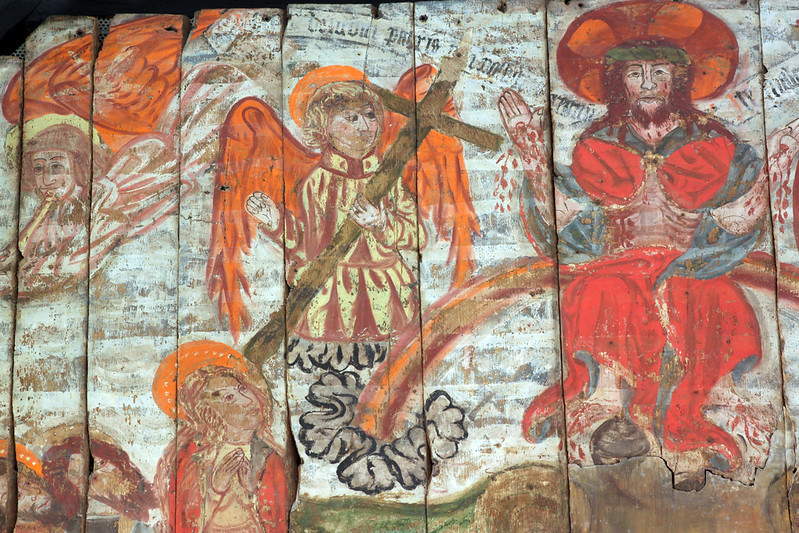

Comments
As well as the five complete wooden dooms, there's a fragment in St Albans: http://icknieldindagations.blogspot.co.uk/2016/08/st-michaels-church-st-albans-herts_6.html